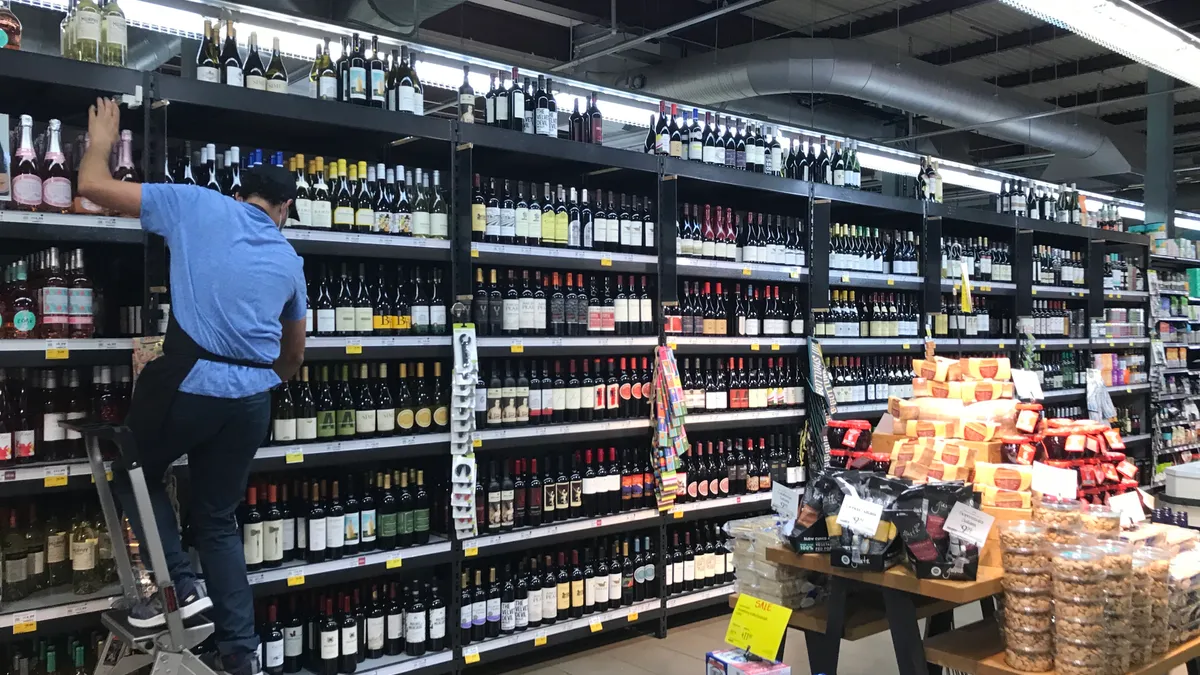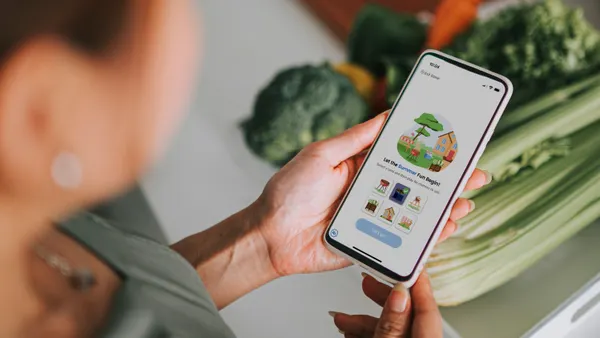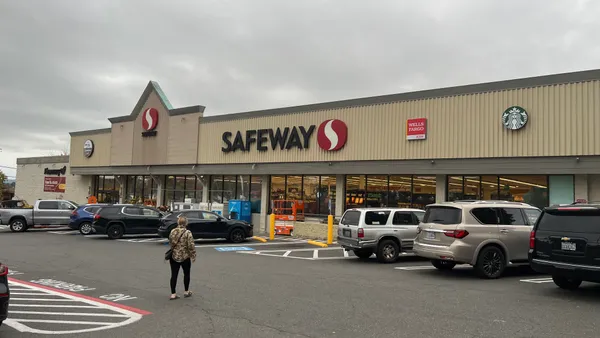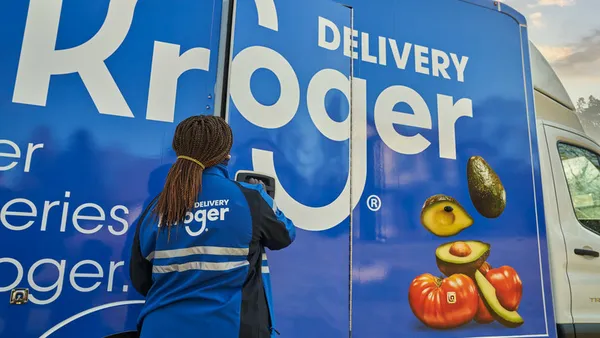Dive Brief:
- Online alcohol sales from grocery stores more than quadrupled from an estimated $441 million in 2019 to $1.6 billion in 2021, and sales are expected to grow roughly 15% in 2022, reaching $1.87 billion, according to a recent report by Rabobank.
- The firm predicted that grocers could have sold more than $3 billion of wine, liquor and beer online if sales share matched in-store.
- While alcohol sales in online grocery declined in the last three quarters of 2021 compared to the same period in 2020, Rabobank expects moderate growth in 2022, noting the “stickiness” of the category. Penetration rates of online alcohol sales are catching up to the rest of the CPG industry, but more investment is needed to further gains, the report said.
Dive Insight:
Alcohol has gotten a big sales boost thanks to e-commerce but is still under penetrated online compared to other grocery categories, Rabobank said.
And while online alcohol sales won't reach the heights of earlier in the pandemic, Rabobank's report made it clear that grocers still have several areas to tap into for more sales. In a few years, online alcohol sales will outpace the overall grocery business, the report predicted.
Ten states, representing 12% of the U.S. population, have passed laws making it easier for grocers to sell alcohol online, like Georgia legalizing alcohol delivery in 2020 and Ohio legalizing spirits delivery last spring, the report said. In response to heightened consumer demand and loosened restrictions, major grocery chains like Walmart, Target and Kroger have expanded the number of stores offerings alcohol online since 2020 — the main reason why online alcohol boomed in the grocery channel, according to Rabobank.
The two biggest channels for large alcohol companies — online grocery and marketplaces — have nearly quadrupled in size in two years, the report noted.
Alcohol is a “major driver” of shopping trips, basket size, customer retention and online grocery conversion overall, the report noted. “E-commerce will be the number-one driver of industry growth over the next decade and a critical component of brand-building, awareness, and trial, both online and in-store,” wrote Bourcard Nesin, beverages analyst at Rabobank and author of the report.
The report noted that wine tends to overperform in e-commerce while beer underperforms. Ship-to-home marketplaces tend to focus on wine offerings, and products with higher price points perform well online, while beer has a sizable presence inside stores.
To better showcase their alcohol offerings, Rabobank recommended retailers feature landing pages and cross-category promotions.
“[Retailers] must optimize assortment, expand their offerings to include multiple modalities of fulfillment (curbside pickup, local delivery, and ship-to-home), and, perhaps most importantly, customize and improve the online shopping experience around alcohol,” the report said.
Rabobank expects retailers to make liquor company acquisitions to quickly gain liquor licenses and expand their alcohol delivery offerings, following in the footsteps of Gopuff, which recently acquired Liquor Barn in Kentucky and BevMo in California. The firm noted Gopuff is now the third-largest outlet for online beer sales in the U.S. behind Instacart and Walmart.
Licensed specialty retailers, which include liquor chains, independent liquor stores, state-run liquor stores and pure-play online operators, have traditionally been the largest and most mature channel for online alcohol sales, Rabobank noted. That channel, which has specialized in helping consumers find locate hard-to-find wine and spirits, grew during the pandemic by tapping into local communities, but saw steep declines in 2021, dropping an estimated 19% to $2.2 billion, per the report. Rabobank predicts the channel to fall by 6% in 2022 before seeing growth return in 2023 as white-label solutions for independent retailers grow.
Overall, online alcohol sales in the U.S. reached an estimated $6.1 billion in 2021 and accounted for 4% of total off-premise alcohol sales — up from $2.6 billion and around 1.9% of off-premise sales in 2019, Rabobank said. At $3.8 billion, wine had the largest sales by category, followed by spirits ($1.3 billion) and beer ($960 million) last year. Spirits nearly tripled its share of sales during the pandemic, the report noted.












